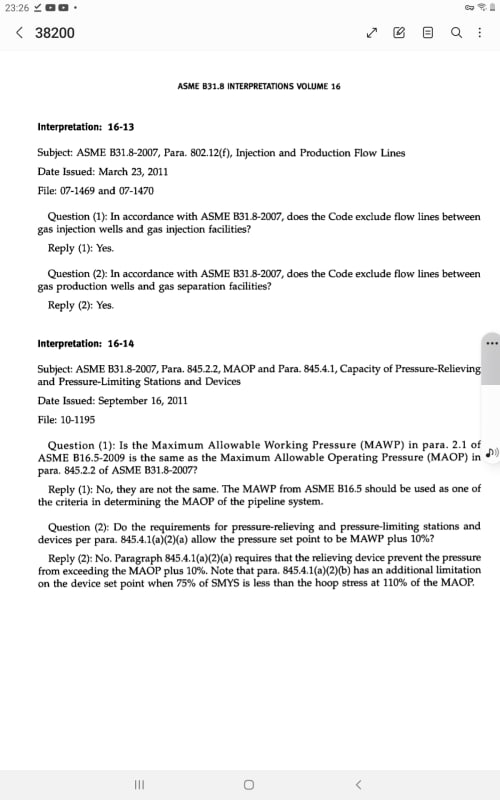I believe that the intent of B31.8 NOT applying to flow lines is to allow for conditions that are not typically found in GAS Pipeline transportation scenarios, ie. much higher pressures and temperatures as well as the many extraneous provisions of the pipeline codes that
only apply to pipelines, much of which is related to different design factors for Area classes, inspection and reporting requirements, Pipeline warning signs, cathodic protection and much more. No point in subjecting lease piping to all of that.
B31.8 applies to all phases. Mostly due to Area Class Location Design Factors.
It is B31.4 that does not apply to 2 or 3-phase fluid streams, unless one of n-1 is water.
CFR PART 195—TRANSPORTATION OF HAZARDOUS LIQUIDS BY PIPELINE applies to liquid pipelines (low vapor pressure products) and can be used for liquid stream pipelines (not flow lines) after passing through the oil/gas seperators.
Note: (b-1)
"This Part does not apply to any of the following:
(1) Transportation of a hazardous liquid transported in a gaseous state"
The USA convention as defined in CFRs is ...paraphrased ... You should use B31.3 (not specifically stated, but there is no other choice possible) from well to the seperators, or production pad limit, if no separators. After that you can continue with B31.3, EXCEPT you must change to CFR 192 GAS (basically=B31.8) if you enter public land, or privately owned lands (any land not owned by the company), or cross a public road, or find yourself downstream of a gas processing facility.
CFR 192 GAS TRANSPORTATION
Text is here
Exceptions do not apply to those parts of an unregulated system that have control and safety functions or have control implications that extend to regulated pipelines.
See also discussion here,
--Einstein gave the same test to students every year. When asked why he would do something like that, "Because the answers had changed."

